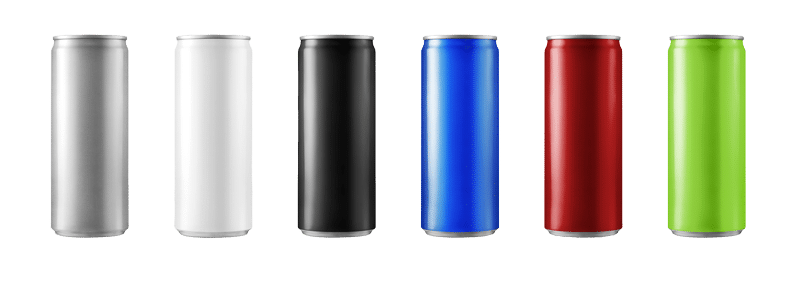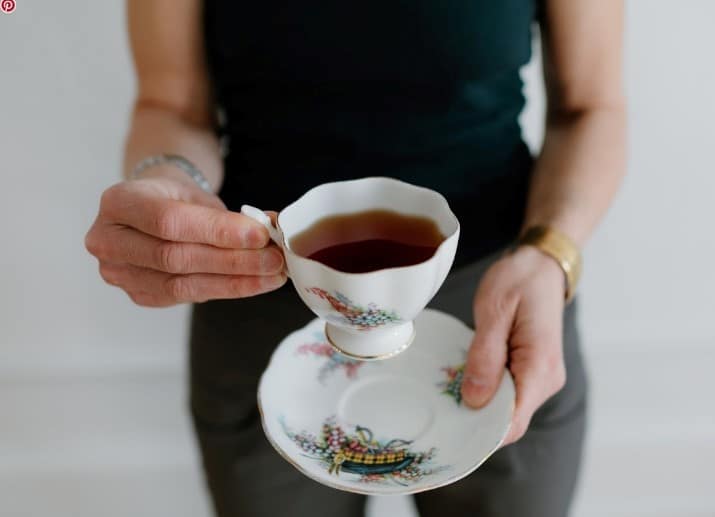Afternoon Tea has been around for decades and it seems like it is making a comeback as I see that a lot of local hotels and restaurants offer it today.
It seems that people freely interchange different terms to talk about this tradition but they all have a slightly different meaning.
Here is a look at some of the various forms and traditions associated with enjoying the daily ritual of the perfect cup of tea.
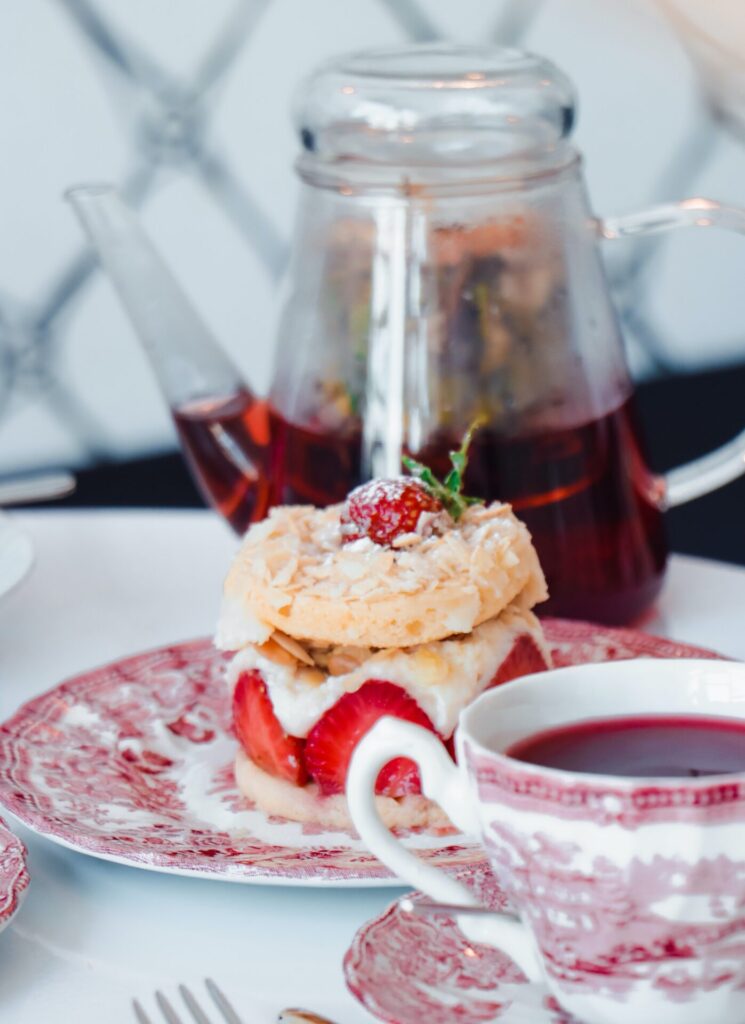
Traditional Afternoon Tea
A cup of tea served with sandwiches, scones and a selection of cakes.
Afternoon tea (sometimes also referred to as low tea) was first introduced in England by Anna Maria Stanhope in the year 1840.
The seventh Duchess of Bedford would become hungry in the afternoon. Unable to wait for the evening meal, which in her household was served fashionably late at eight o’clock, she asked that a tray of tea, bread with butter and cake be served around 5 o’clock in her room at the Belvoir Castle. This became part of her daily routine and she soon began inviting friends to join her, making this pause for tea a voguish event. This tradition continued to evolve into the1880’s. Upper-class women would dress in long gowns, gloves and hats for their afternoon tea. These social gatherings were usually served between four and five o’clock, in the drawing room of whichever high-society woman hosted the event.
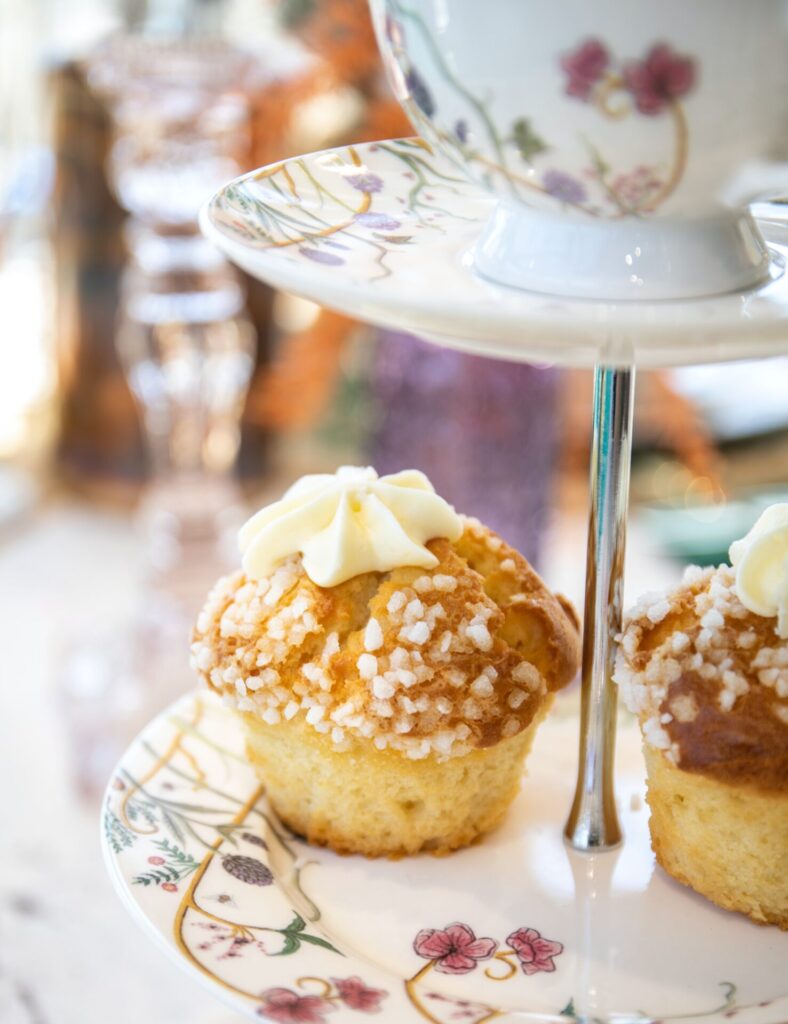
Variants of Afternoon Tea
Of course, the tradition of afternoon tea has evolved and new traditions have been created throughout history. Here’s a look at some of the various tea rituals that stemmed from Afternoon Tea.
High Tea
A cooked dish, bread with butter, and tea.
Visitors from overseas often refer to British Afternoon Tea as ‘High Tea’ but this term is associated with an entirely different and more substantial meal. High Tea consists of savoury foods and an altogether heartier meal. It was historically taken by the lower classes at the end of their work day shortly after 5pm. You and I likely call this ritual “dinner”. Its name is derived from the fact that it was served on high, dining tables and high backed chairs. As opposed to traditional afternoon tea which was served on lower “coffee” tables, low side tables, from 3 tiered serving trays, while seated on comfortable sofas and chairs.
Cream Tea
A crumbly scone with clotted cream, strawberry jams and the perfect cup of tea.
Cream tea is a culinary trend that started in the West country, around 1850. An opening of the railway system led to an increase in visitors. Tourists flocked down south (for air and sea) to relax and indulge. Local establishments like tea rooms and hotels served delicious afternoon cream teas, made with the finest local ingredients. An authentic cream tea is usually served with clotted cream.
What IS clotted cream?
Clotted cream is a creamy substance that lands somewhere between butter and whipped cream. It is a time consuming delicacy, which is made by putting fresh cow’s milk on a stove top to simmer for 12 hours before letting it cool down for 8 hours.
Cream then jam, or jam then cream?
The order is the difference between the Cornish and the Devon cream tea and a subject of great controversy between these 2 regions. Though historians believe that a tradition of eating bread with cream and jam existed at Tavistock Abbey in Devon during the 11th century, the exact origin of Cream Tea is still disputed,
Royal Afternoon Tea
The same menu as Afternoon Tea, plus a glass of champagne.
Royal Afternoon Tea sees the addition of a glass of champagne to a traditional Afternoon Tea, for those extra special occasions or just because you feel like it! If sparkling wine or prosecco is on the menu, it is then know as “sparkling afternoon tea”.
Light tea
Tea, served with light snacks such as small scones, pastries or finger sandwiches.
The idea behind a light tea is not to provide a full meal to get you to dinner time. But rather, it’s a chance to indulge in a light snack, a opportunity to be social, and enjoy conversation in a comfortable atmosphere.
Elevenses
A cup of tea or coffee, biscuits or light pastries.
Elevenses is a short, mid-morning break taken to consume a drink or snack. This break is usually taken around 11:00 a.m. (given the name, you probably could have guessed this) and could be considered a second breakfast.
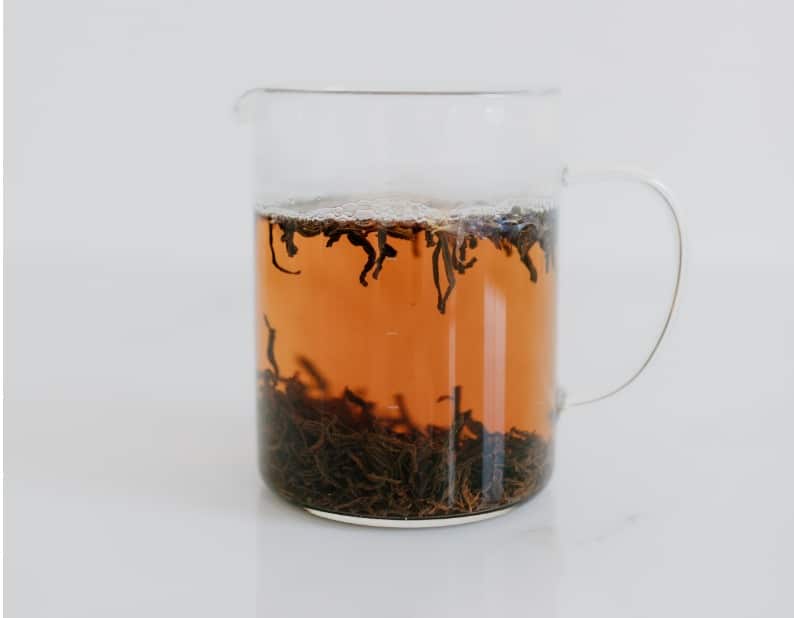
The Best Afternoon Tea Options
If you’d like to host your own Afternoon Tea, you’ll need to choose the type of tea you serve wisely. A few favourite options include:
Earl Grey Tea – pairs well with sweet afternoon tea treats like pastries, scones, and cookies
Chamomile Tea – a great compliment to fruity confections often served with afternoon tea
Assum Black Tea – goes well with more savoury afternoon tea snacks, like finger sandwiches
Of course, in the heat of the summer, some may crave a more refreshing option while still maintaining the tea portion of a traditional afternoon tea.
Our sparkling teas are the perfect way to enjoy tea, in a cool, refreshing way!
Sarah + Chris
What is your favorite tea to enjoy at Afternoon tea? Let us know in the comments below.
